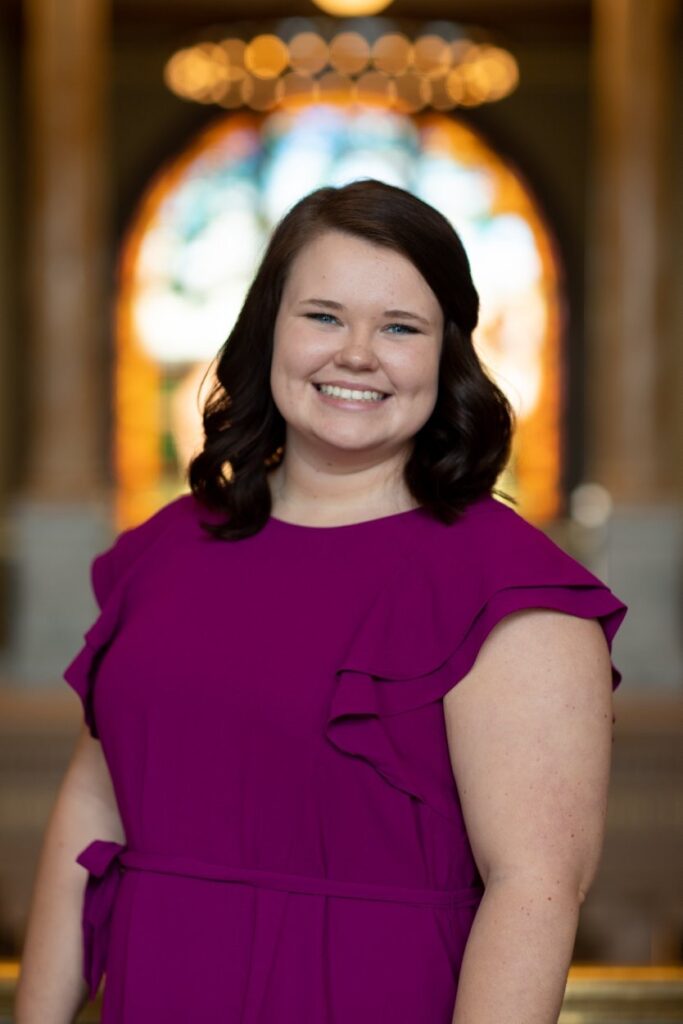Covid in Rural Communities: Two Perspectives on the Response in Iowa
- By: The Public Health Learning Network
- Date
On Memorial Day, the number of Covid-19 cases in Iowa stood at 15,557 with 457 deaths. The state began reopening in phases beginning on May 1, which, in a state where more than a third of residents live in rural communities, creates some unique challenges for public health professionals. To get a more complete view of the impact of Covid on rural communities, we asked Kaci Ginn, a third-year undergraduate interning at Jones County Public Health in Anamosa, Iowa, and Brad Brake, director of home and public health for a rural health department, to share their own experiences related to the pandemic in Iowa.
Covid-related Concerns and Challenges in Iowa
For Brad, the biggest challenge has been balancing the needs of public health and the needs of home health. “On the public health side, our priority has been educating our residents about the very real threat that Covid-19 brings and each day stresses the importance of personal mitigation measures – staying home, social distancing, and exemplary hygiene,” he says. “However, at the same time, I am asking a staff of home health nurses and bath aides to continue their incredibly important roles in conducting home visits.”
Those two directives seem contrary, but home health services are essential, especially in rural communities. According to the Home Health Chartbook 2019, nearly 60 percent of home health users are over the age of 75 and a majority of them are widowed, separated, divorced, or have never been married. This population of clients relies heavily on the services and support provided by home health workers, but they are also at high risk for Covid-19. To protect the clients and his staff, Brad says that the health department screens their clients and makes sure personal protective equipment (PPE) is supplied. He also notes that precautions are taken and that the health department has provided a hazard stipend for those workers who have continued to see clients.
 “It’s still a challenge asking [workers] to continue to serve on the frontline while we as an office are asking the general public to remain home whenever possible,” Brad says. He is most concerned with making sure his staff are in a good place and have what they need to continue to do their work. Their jobs are taxing and filled with second-hand trauma during non-pandemic times. Now, they must deal with the “normal” stress on top of adapting to the lack of childcare, needing to homeschool, and fear for family members or themselves with underlying conditions, although staff with underlying conditions are not conducting home visits.
“It’s still a challenge asking [workers] to continue to serve on the frontline while we as an office are asking the general public to remain home whenever possible,” Brad says. He is most concerned with making sure his staff are in a good place and have what they need to continue to do their work. Their jobs are taxing and filled with second-hand trauma during non-pandemic times. Now, they must deal with the “normal” stress on top of adapting to the lack of childcare, needing to homeschool, and fear for family members or themselves with underlying conditions, although staff with underlying conditions are not conducting home visits.
Elderly residents of rural Iowa aren’t the only ones facing challenges. In the rural community where she works, Kaci Ginn is concerned about the mental health of farmers who are at the mercy of the weather and now the added stress of volatile markets as a result of the pandemic. “In my experience, farmers are usually the last ones to reach out for help when they are in need,” she says. Brad echoes her concern for the economic impact this is having on his rural county, which is especially acute for him having grown up on a family farm.
Staying Connected in Rural Communities
Videoconferencing has enabled Brad to connect with colleagues and family, noting that with colleagues, it is not terribly different than before. The friends and family piece has, of course, been a process to get used to. “I became an uncle for the first time early on during Covid-19, so it has been difficult going on three months now having not officially met my nephew,” he says. “It is also strange getting on a Zoom call with friends who are just a few blocks away.”
In rural communities, Brad’s experience isn’t as common as you may think, with nearly a quarter of rural Americans saying access to high-speed internet is a major problem in their area, according to a 2018 study conducted by the Pew Research Center. People’s ability to stay connected through the Internet and to access the information and resources they need can contribute to how they cope with the stress associated with the pandemic.
For Kaci, when it comes to connecting with family and friends, she says, “having boundaries in those conversations with loved ones has been essential to maintaining relationships and my own sanity. Some days those boundaries were, ‘I would appreciate it if we could keep our conversation light and not talk about Covid-19 or work today,’ and some days it was ‘I am okay with talking about Covid-19 today, but please use discernment when bringing up things you may have heard in the news that err more towards speculation than fact.’”
Hope is Still in Large Supply in Rural Iowa
Although their confirmed cases have climbed over the past few months, Brad says they have been “incredibly fortunate to not have a Covid-19 related death in the county. “There is a fear our residents will begin to relax over these next few months as different sectors reopen,” he says. “[But I am] incredibly appreciative and grateful for how engaged people at all levels of Harrison County have been … and their continued interest in doing what is best for our residents.”
Brad hosts a conference call every morning for community stakeholders to address questions and concerns regarding Covid-19, which includes mayors, principals, city administrators, county supervisors, pharmacists, police, doctors, EMS workers, and care center directors. “I believe we are up to fifty of these calls since March 12, and there are always 35-40 people listening in and contributing,” he says. That gives him hope–the fact that there are that many leaders in the community ready to problem solve and address any issue that may arise for the betterment of the community.
 Kaci also sees hope when she scans her community and focuses on everything people are doing to bind the community together, including the small things. “‘Look for the helpers’ is a line that was featured in a classmate’s speech at my high school graduation ceremony, and it is one that still reminds me to look for the beauty in the hard times,” she says. “One of the most inspiring things that I have seen in the small community where I am working is the willingness of community members to help in any way that they can. When our emergency manager put out a call for homemade masks due to an anticipated need for PPE, there were countless people who volunteered their time and limited resources to make masks or sent monetary donations to help in whatever capacity they were able to.”
Kaci also sees hope when she scans her community and focuses on everything people are doing to bind the community together, including the small things. “‘Look for the helpers’ is a line that was featured in a classmate’s speech at my high school graduation ceremony, and it is one that still reminds me to look for the beauty in the hard times,” she says. “One of the most inspiring things that I have seen in the small community where I am working is the willingness of community members to help in any way that they can. When our emergency manager put out a call for homemade masks due to an anticipated need for PPE, there were countless people who volunteered their time and limited resources to make masks or sent monetary donations to help in whatever capacity they were able to.”
Kaci also mentioned the small acts of kindness from people checking in on elderly neighbors to an emergency food delivery program from a coalition of county agencies occurring each and every day. “It can be easy to get caught up in the big, scary things that are happening,” she says. “But I promise there are small, beautiful acts happening at the same time if you look closely.”
Although she is inspired by the willingness of people in her network to spring into action, Kaci says she did not have a grasp on just how important preparedness is for the health of communities. “Being able to incorporate what I am currently learning [at school] in regards to public health emergency preparedness as well as coordinating public health’s response with the county emergency manager has been an amazing opportunity to see the greater reach of public health activities in practice,” she says.
Brad agrees with this need for increased coordination, calling this “an incredible opportunity for collaboration across all sectors to improve public health and change the way the general public views public health.” He believes the public health workforce needs to be ready to seize those opportunities and be figuring out how to capitalize on the connections made through this process to better serve our communities right now.
 Subscribe To Our Communications
Subscribe To Our Communications